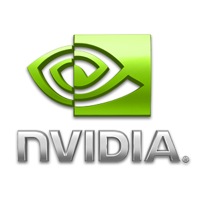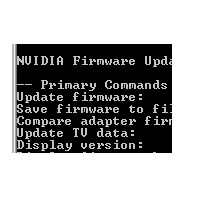NVIDIA Graphics Card - Flash BIOS
WarningAlways be careful when flashing the BIOS of anything. Not only is it a complicated process, but you have a chance to completely ruin whatever device you're attempting to flash
InformationThis process is complicated and should not be attempted by people not familiar with BIOS. You will need the following items to flash a new version of BIOS onto your NVIDIA card.
- Latest NVIDIA BIOS for your card
- A copy of the program "NVFLASH"
- A DOS boot disk, either in cd or floppy format.
All of the operations that need to be performed will happen in DOS. To get into DOS, you'll need a DOS boot disk. If you have a floppy disk drive, then use this website to download and create a dos disk. Otherwise, you can just insert the disk into your computer, right click and create a boot disk. If you don't have a floppy disk, you will need to follow this tutorial to create a bootable DOS cd. You will also need a copy of the program NVFLASH and your BIOS. The latest version of NVFLASH can be found at Softpedia via this link.
Now that you've learned how the create the boot disk, here is what you need to do in order to flash your gfx bios.
First, copy the NVFLASH.exe file and the BIOS files to the boot disk you just created. Once you've done this you need to boot your computer into dos. You may have to go into your Motherboard BIOS and switch the boot order in order to have your computer to boot off your cd/floppy.
Once in dos you should create a backup of your current BIOS in case of failure. To do so you need to be at the A:\ prompt. Once you're there, type in this command:
nvflash -b oldbios.romNow press Enter. This will cause the NVFLASH utility to create a backup of your current BIOS and place it on the boot disk.
WarningIf you see any error messages do not restart your computer. Consult the error section below
Now that you've backed up your current BIOS, you're ready to flash the new version onto your card. From the A:\ prompt, type:
nvflash -5 -6 {name of the new BIOS file including the file extension)Now press Enter. This will flash your video card with the new version of bios, rewriting the old version. If you saw an error, STOP! Consult below. If everything worked correctly, restart your system and watch the POST process as it updates your system. If you installed BIOS for a new type of card you may need to install new drivers.
Error Section
If you have/had an error in the bios flash process DO NOT RESTART. Restarting will cause your graphics card to fail to start, and may even brick the card. If you're wondering, bricking your card is not good.
You need to flash your bios back with the backup bios that you made when you started the dos process. This can be done by typing the following command:
nvflash -5 -6 oldbios.romOnce this is done without error, you can restart your computer. If you wish to download a new BIOS set to install, do so, but be careful not to restart from a bios flash unless you're certain there were no errors and the bios flashed correctly.
If you restarted after a failed bios update you will need to do a bit more to recover your card. You'll need to find a different PCI Video card to use in order to flash the bios of the card you just restarted with. Once you have the other card installed (use a different brand card if possible) you can boot using your boot disk/cd. Make sure that you plug your monitor into the new card. Once you get to the A:\ prompt, type:
nvflash -5 -6 oldbios.romNow press enter. This should fix your broken card.
NVIDIA Graphics Card - Flash BIOS
-
New #1
Got a little note you may want to include in your tutorial... If somebody is running any type of multi-GPU setup (SLI, Rendering+Physx, etc), you need to specify which card to flash the BIOS to.
This is done by adding --index=0 (0 is first slot, 1 is second slot, 2 is third, etc) directly after 'nvflash'. For example:
For first card:Code:nvflash -5 -6 BIOS.ROM
For second card:Code:nvflash --index=0 -5 -6 BIOS.ROM
Best place I've ever found to download NVidia BIOS files and tools is here: ReMOSitory.comCode:nvflash --index=1 -5 -6 BIOS.ROM

How to flash the bios on an nvidia graphics card
NVIDIA Bios Flash w/ DOS CD-Rom & NVFLASHPublished by not so gray matter
Related Discussions






 Quote
Quote